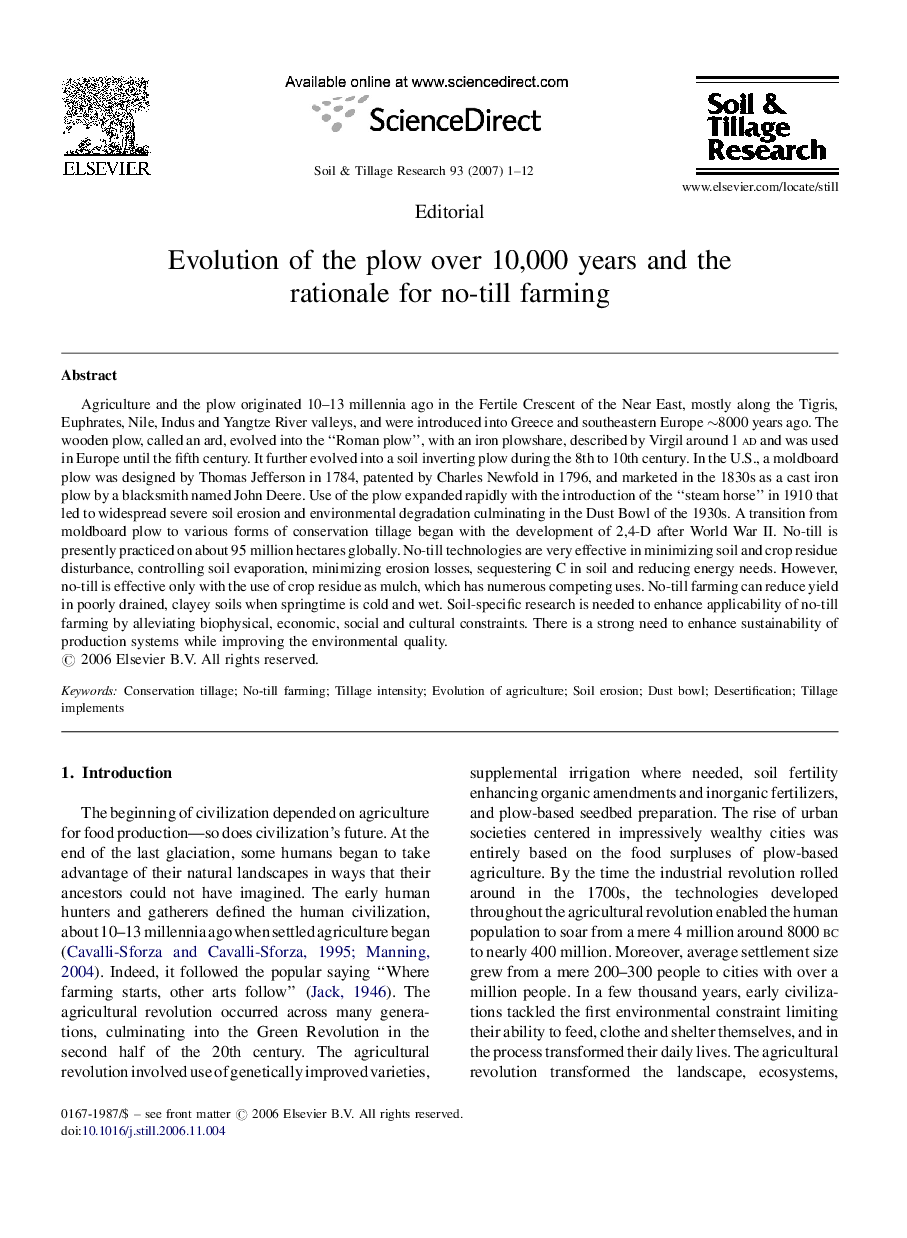| کد مقاله | کد نشریه | سال انتشار | مقاله انگلیسی | نسخه تمام متن |
|---|---|---|---|---|
| 306718 | 513112 | 2007 | 12 صفحه PDF | دانلود رایگان |

Agriculture and the plow originated 10–13 millennia ago in the Fertile Crescent of the Near East, mostly along the Tigris, Euphrates, Nile, Indus and Yangtze River valleys, and were introduced into Greece and southeastern Europe ∼8000 years ago. The wooden plow, called an ard, evolved into the “Roman plow”, with an iron plowshare, described by Virgil around 1 ad and was used in Europe until the fifth century. It further evolved into a soil inverting plow during the 8th to 10th century. In the U.S., a moldboard plow was designed by Thomas Jefferson in 1784, patented by Charles Newfold in 1796, and marketed in the 1830s as a cast iron plow by a blacksmith named John Deere. Use of the plow expanded rapidly with the introduction of the “steam horse” in 1910 that led to widespread severe soil erosion and environmental degradation culminating in the Dust Bowl of the 1930s. A transition from moldboard plow to various forms of conservation tillage began with the development of 2,4-D after World War II. No-till is presently practiced on about 95 million hectares globally. No-till technologies are very effective in minimizing soil and crop residue disturbance, controlling soil evaporation, minimizing erosion losses, sequestering C in soil and reducing energy needs. However, no-till is effective only with the use of crop residue as mulch, which has numerous competing uses. No-till farming can reduce yield in poorly drained, clayey soils when springtime is cold and wet. Soil-specific research is needed to enhance applicability of no-till farming by alleviating biophysical, economic, social and cultural constraints. There is a strong need to enhance sustainability of production systems while improving the environmental quality.
Journal: Soil and Tillage Research - Volume 93, Issue 1, March 2007, Pages 1–12